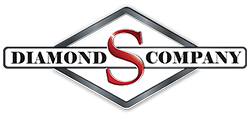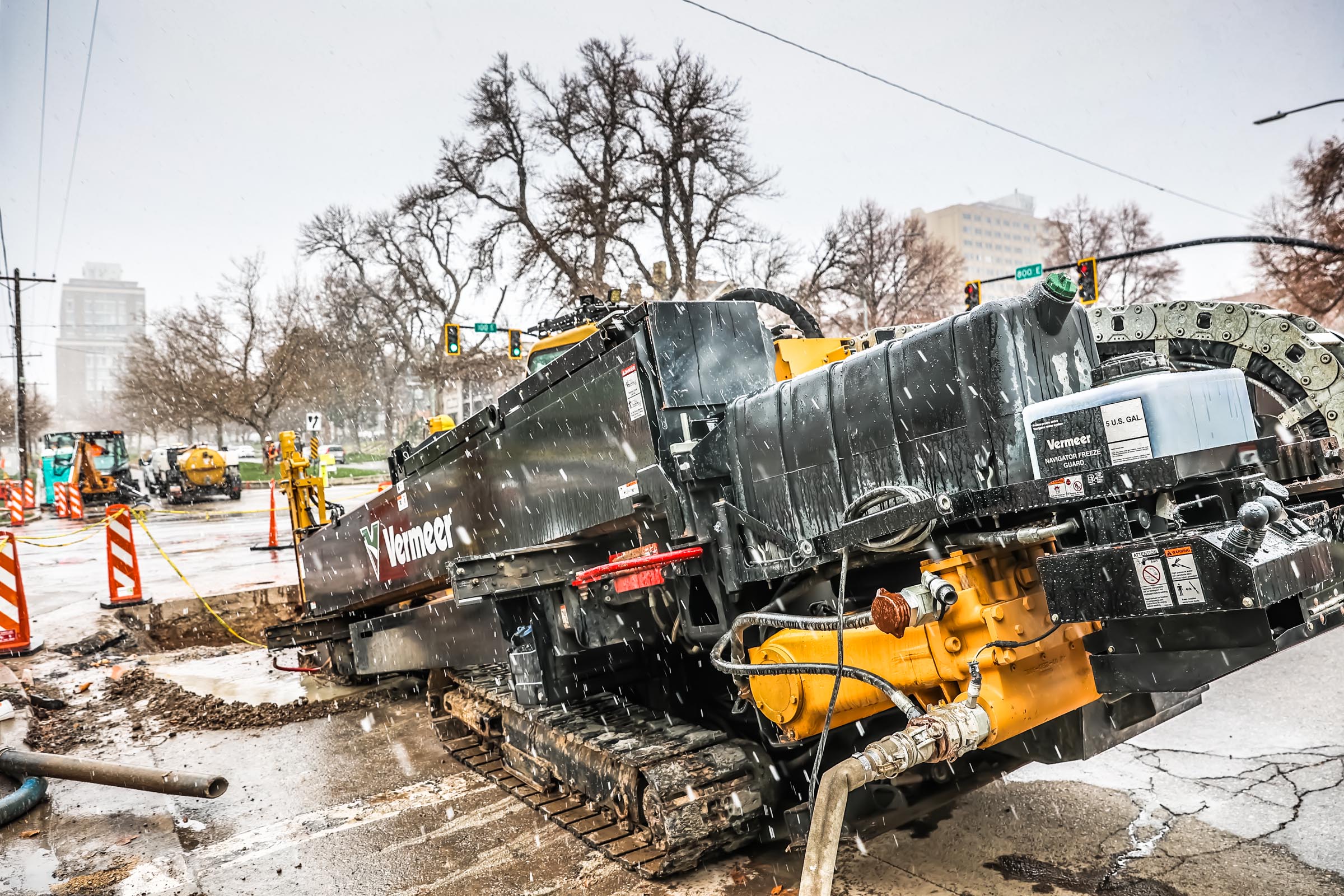Diamond S Company has been installing steel and plastic natural gas distribution lines throughout the Salt Lake Valley since 1942. Our crews are skilled and experienced in conventional installation techniques that typically require excavation and trenching, and work with a select few contractors when directional boring is required.
Directional boring, also known as Horizontal Directional Drilling (HDD), is a trenchless boring technique that uses a steerable drill bit controlled from a remote location to install underground piping, conduits, and cables along a predetermined bore path.
The process starts by drilling a small pilot hole to outline the pre-determined bore path, with one entry point and one exit point. Then, a reamer is used to enlarge the hole to the diameter required to accommodate the size of the pipes. Once the hole is large enough, a continuous piping segment is pulled through the entry hole to the exit hole. Thus, the underground pipe is exposed only at the two initial points, entry and exit.
This trenchless technique has several distinct advantages over traditional installation techniques and a few inherent risks, which can be significantly lessened when you have crews that are experienced in the technique. That is why we work only with the top contractors that specialize in directional boring. We work side-by-side with these partners; while they do the actual bore work, DSC does the excavation pits, welding or fusing of the pipeline and all other tasks of the project. Having our experienced DSC crews work with contractors who specialize in the technique gives us a distinct advantage.
Advantages of Using the Directional Boring Technique
Directional Boring allows gas line installation in areas where conventional trenching techniques are not practical, minimal surface disturbance is necessary or required by engineer plans. The technique is typically used when gas lines need to cross railroads, intersections, freeways/highways, canals, rivers, or anywhere where traditional trenching would require extensive excavation or disturb hard surfaces or traffic.
For example, if lines need to be replaced near a school, traditional trenching requires interruption, rerouting traffic, extra safety concerns for the public and extended job duration. A directional bore can work outside those areas of concern minimizing the public safety, traffic congestion/disruption saving time.
Why Experience Matters
With any drilling technique, there are always risks. One such risk with directional boring is getting the natural gas line—particularly the large, 16-inch diameter steel pipes—stuck in the hole. If this happens, the line must be extracted, and the process started all over again.
When using the directional boring technique, you must be “on the mark.” You need to have everything right—the angles, flats bottom, the numbers, and the mud. The hole has to be right on, and the mud has to be the right consistency for the type of ground to allow the pipe to be pulled through successfully. There is a lot of science and experience involved in mixing the right mud—there is a huge learning curve and a lot of engineering involved in the technique. In addition, fusing or welding should be complete before installation begins.
The bottom line: there are a lot of moving parts involved. When it goes right it looks so easy, but if it’s not done just right, timelines and budgets and reputation suffer. This is where DSC’s experience and partnerships come into play. We are highly skilled in this type of work for natural gas lines, and we only work with the best directional bore companies.
When it comes to installing natural gas distribution lines in congested or difficult areas, directional boring is a technique that can save you a lot of hassle, time, and money. The key is to work with an experienced contractor like DSC to get the job done right!

